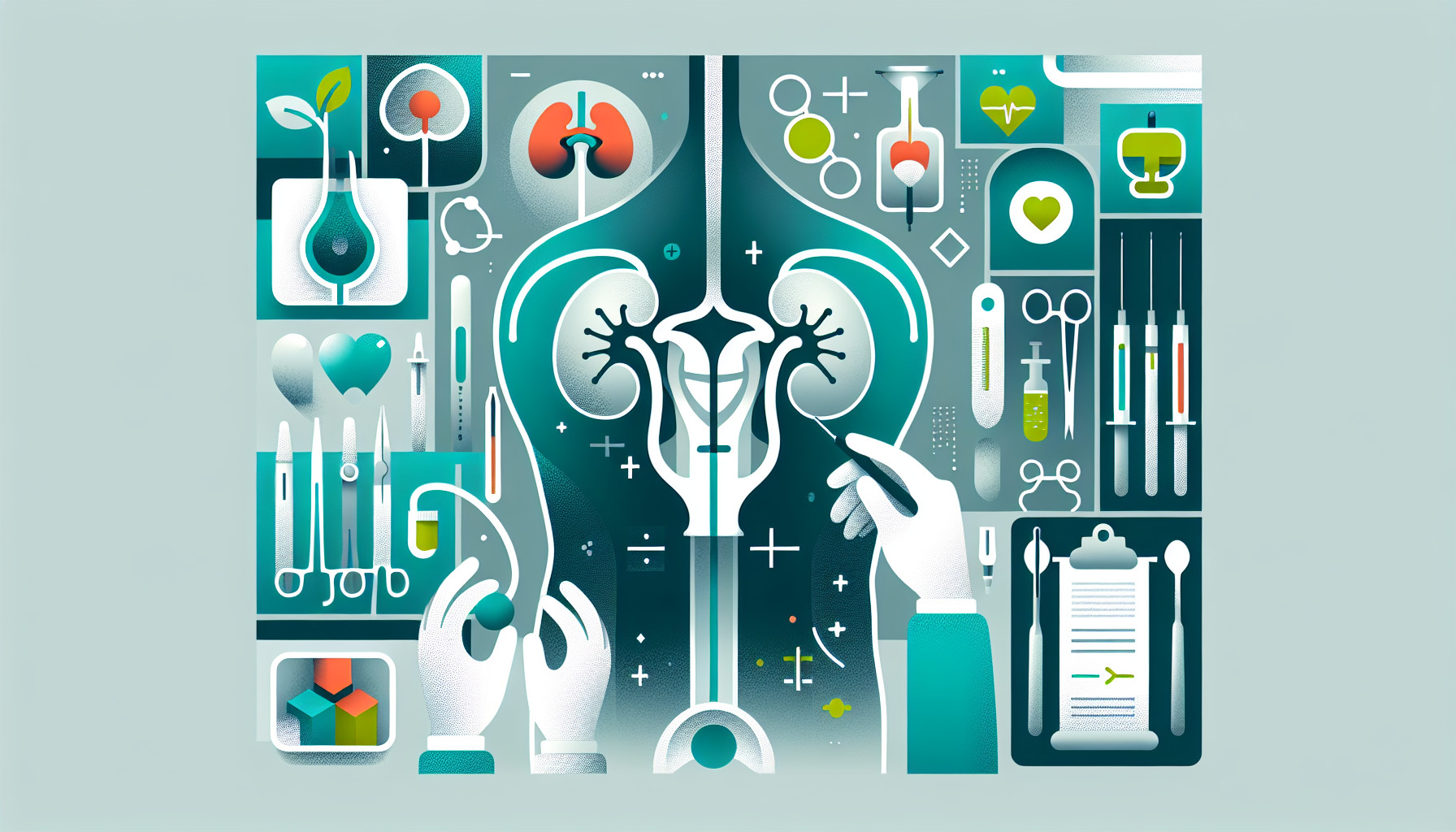Our Summary
This research paper focuses on bladder cancer, which is the 10th most widespread cancer around the world and is becoming more common. The standard treatment for bladder cancer that has spread to the muscles includes a surgical procedure to remove the bladder (radical cystectomy) along with urinary diversion, a process to reroute the flow of urine from the kidneys out of the body.
Urinary diversion methods can be divided into two types: non-continent and continent. Non-continent methods (like cutaneous ureterostomy and ileal conduit) involve creating a new pathway for urine to exit the body through an opening in the skin. Continent methods (like ureterosigmoidostomy and orthotopic voiding pouches and neobladders) involve creating a new storage pouch inside the body that can hold and release urine in a more controlled way, sometimes requiring the use of a catheter.
This paper provides an in-depth review of these urinary diversion techniques, offering a summary of almost all possible alternatives for rerouting urine after bladder removal surgery.
FAQs
- What is the standard treatment for muscle-invasive bladder cancer?
- What are the most common procedures for non-continent urinary diversions?
- Can you explain the different types of continent urinary diversions?
Doctor’s Tip
A doctor may advise a patient with a ureterostomy to carefully monitor their stoma site for any signs of infection or irritation. It is important to keep the area clean and dry to prevent skin breakdown. They may also recommend the patient to drink plenty of fluids to help prevent urinary tract infections and to follow a proper diet to maintain healthy kidney function. Regular follow-up appointments with the doctor are essential to monitor the stoma and overall health.
Suitable For
Patients who are typically recommended ureterostomy as a urinary diversion after radical cystectomy for bladder cancer include those who are not suitable candidates for continent diversions due to factors such as poor renal function, previous abdominal surgeries, or medical comorbidities. Ureterostomy may also be recommended for patients who require a simpler and less invasive form of urinary diversion, or who are unable to perform self-catheterization for continent diversions. Additionally, ureterostomy may be considered for patients with a higher risk of complications with other forms of urinary diversion, such as those with extensive pelvic radiation or prior pelvic surgery. Ultimately, the decision to recommend ureterostomy as a urinary diversion is made on a case-by-case basis, taking into account the individual patient’s specific medical history and needs.
Timeline
Before ureterostomy:
- Diagnosis of bladder cancer and determination of the need for radical cystectomy.
- Consultation with a urologist to discuss treatment options, including urinary diversion.
- Pre-operative testing and preparation for surgery.
- Radical cystectomy surgery, which involves removal of the bladder and creation of a new way for urine to leave the body.
After ureterostomy:
- Recovery period in the hospital, typically lasting 1-2 weeks.
- Adjustment to living with a ureterostomy bag, which collects urine directly from the ureters.
- Follow-up appointments with the urologist to monitor healing and address any concerns.
- Lifestyle adjustments to accommodate the presence of the ureterostomy bag, including changes to diet and clothing.
- Long-term management of the ureterostomy, including regular bag changes and monitoring for complications such as infection or blockage.
What to Ask Your Doctor
- What is a ureterostomy and how is it performed?
- What are the potential risks and complications associated with a ureterostomy?
- How will a ureterostomy affect my daily life and activities?
- What kind of follow-up care will be required after undergoing a ureterostomy?
- Are there any dietary or lifestyle changes I need to make after a ureterostomy?
- How long can I expect to have a ureterostomy in place?
- Will I need any additional surgeries or procedures related to the ureterostomy in the future?
- How will a ureterostomy impact my quality of life in the long term?
- Are there any alternative urinary diversion options I should consider?
- What are the success rates and outcomes for patients who undergo a ureterostomy?
Reference
Authors: Barone B, Napolitano L, Reccia P, Calace FP, De Luca L, Olivetta M, Stizzo M, Rubinacci A, Della Rosa G, Lecce A, Romano L, Sciorio C, Spirito L, Mattiello G, Vastarella MG, Papi S, Calogero A, Varlese F, Tataru OS, Ferro M, Del Biondo D, Napodano G, Vastarella V, Lucarelli G, Balsamo R, Fusco F, Crocetto F, Amicuzi U. Journal: J Pers Med. 2024 Apr 8;14(4):392. doi: 10.3390/jpm14040392. PMID: 38673019
